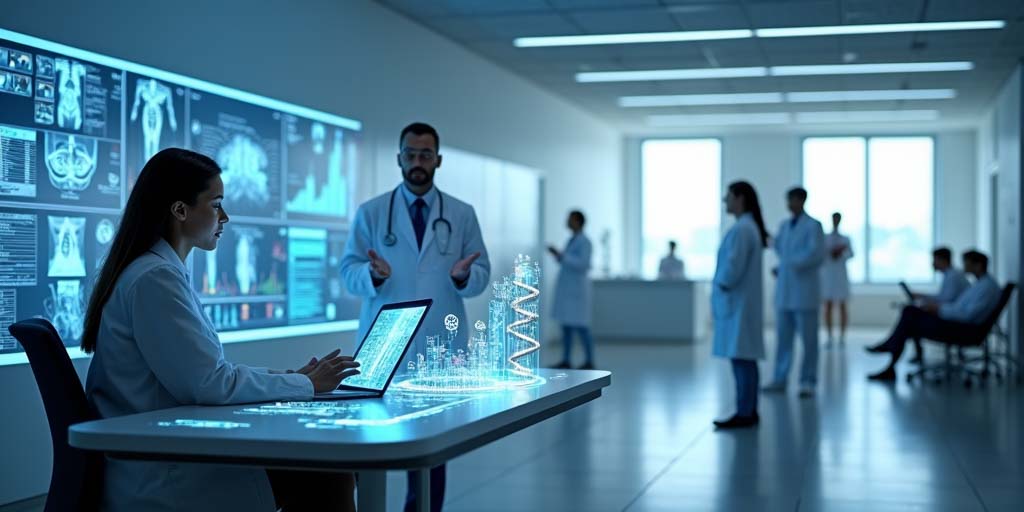From AI to Telemedicine: 2025’s Top Innovations in Patient Care
The evolution of technology continues to reshape the healthcare landscape, introducing a slew of innovations that promise to enhance patient care dramatically. As we move through 2025, several groundbreaking technologies have emerged, transforming every facet of healthcare from diagnosis to treatment, and ongoing management. In this post, we will explore the top innovations in patient care, focusing on the roles of artificial intelligence (AI), telemedicine, and other technological advancements that are setting new standards in healthcare efficacy and patient satisfaction.
1. Artificial Intelligence (AI) in Diagnosis and Treatment Planning
AI technology has made significant strides in diagnosing diseases with a level of accuracy that, in some cases, surpasses human experts. For instance, AI-powered imaging tools can now detect abnormalities in X-rays and MRI scans faster and often more accurately than radiologists. AI algorithms are trained on vast datasets of medical imaging, allowing them to recognize patterns invisible to the human eye.
Moreover, AI is revolutionizing treatment planning in oncology, where precision is paramount. Algorithms can analyze medical records, scientific literature, and clinical studies to suggest personalized treatment plans that optimize the likelihood of success. For example, IBM Watson Oncology is assisting doctors in creating tailored therapies for cancer patients by analyzing the medical literature and patient information against existing treatment guidelines.
2. Telemedicine and Remote Patient Monitoring
The rise of telemedicine has been one of the most significant shifts in healthcare delivery, a trend that has only accelerated in 2025. Telemedicine allows patients to consult with their doctors via video conferencing, reducing the need for physical visits and enabling timely medical advice. This is particularly beneficial for rural or underserved populations who previously had limited access to healthcare.
Remote patient monitoring (RPM) technologies have also advanced, enabling doctors to monitor their patients’ health in real-time from afar. Devices like smartwatches and fitness trackers that monitor everything from heart rhythms to blood sugar levels are commonplace and can alert healthcare providers to potential health issues before they become severe emergencies. An example of this is the new generation of smart inhalers for asthma patients, which track usage patterns and can predict flare-ups, thereby preventing hospital visits.
3. Virtual Reality (VR) and Augmented Reality (AR) for Medical Training and Treatment
Virtual reality and augmented reality are playing increasingly critical roles in both medical training and patient care. VR simulations are used to train surgeons, offering a hands-on experience without the risks associated with real-life surgeries. This technology allows for repeated practice sessions in a controlled environment, enhancing the surgeon’s skills and preparedness.
In treatment scenarios, VR is being used for pain management and therapy. For instance, VR applications can distract burn victims from pain during wound care procedures and have been shown to reduce anxiety and pain in patients undergoing various types of medical treatments.
4. Personalized Medicine and Genomics
The field of genomics has provided pathways to personalized medicine that seemed like science fiction a decade ago. In 2025, it’s possible to sequence a patient’s genome quickly and affordably, leading to highly personalized treatment plans that are based on genetic predispositions. This innovation significantly improves the effectiveness of treatments and reduces side effects by tailoring medications to the individual’s genetic makeup.
For example, pharmacogenomics, the study of how genes affect a person’s response to drugs, allows for more precise medication prescriptions that maximize efficacy while minimizing adverse effects. This approach is particularly transformative in fields like psychiatry and oncology.
5. Internet of Medical Things (IoMT) and Big Data
The Internet of Medical Things (IoMT) refers to the interconnected system of medical devices, software applications, and health systems and services. This ecosystem generates vast amounts of data, which when analyzed, can lead to improved operational efficiencies and patient outcomes. In 2025, IoMT devices are not only commonplace but are smarter and more integrated.
Big data analytics plays a crucial role in making sense of the data collected. By employing advanced analytics, healthcare providers can identify trends, predict epidemics, improve quality of life, and avoid preventable deaths. An example of this is predictive analytics in heart disease, which can analyze data from various sources to predict patient risks and recommend preventative measures.
Conclusion
The year 2025 marks an era of unprecedented growth in technological innovation within the healthcare sector. From AI to telemedicine, VR to personalized medicine, these advancements are setting new standards in patient care, making treatments more effective, healthcare more accessible, and patient outcomes better than ever. As technology continues to evolve, it holds the promise of further transforming every aspect of healthcare, spotlighting an exciting future for patients and providers alike.
